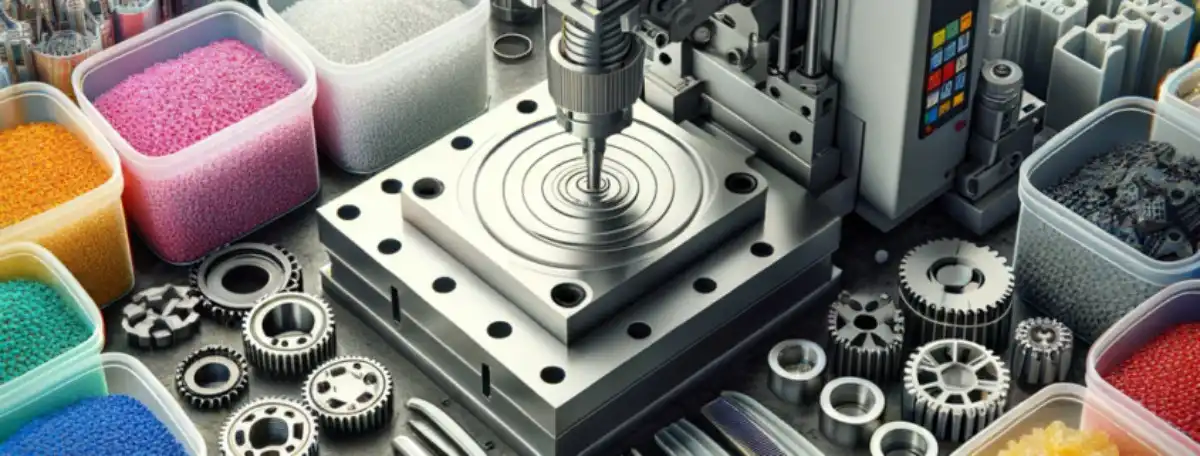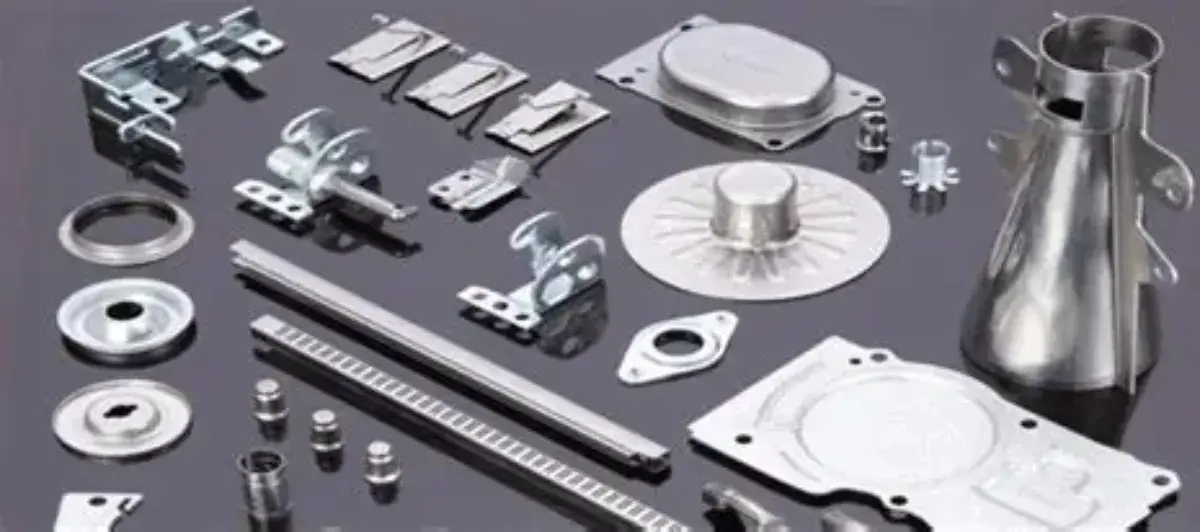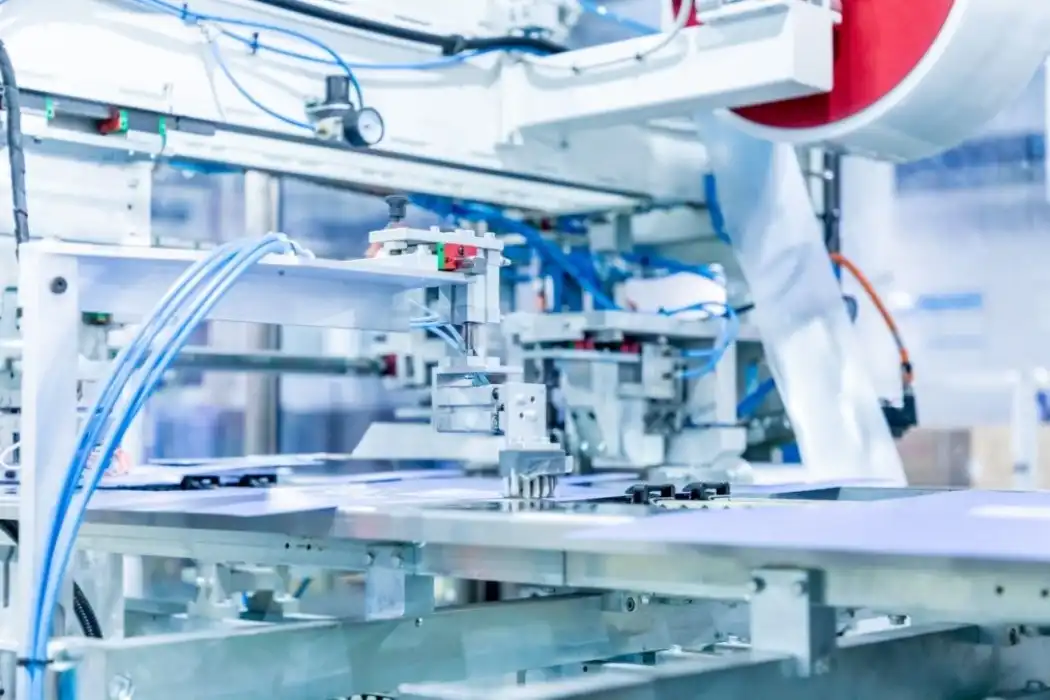What Material are Plastic Injection Molds Made Of?
Plastic injection molds are primarily crafted from high-quality tool steels, specifically designed to withstand the rigorous demands of the injection molding process. These molds, essential in shaping molten plastic into precise components, are typically constructed using plastic injection molding materials; like P20 steel, H13 steel, or stainless steel. The type of plastic being formed, the difficulty of the part, and the amount that will be made all affect the choice of material. These specialized steels offer excellent durability, heat resistance, and dimensional stability, ensuring the molds can maintain their integrity through thousands of production cycles. Choosing the right mold material is very important if you want to make high-quality plastic parts quickly and cheaply.
Key Characteristics of Plastic Injection Mold Materials
Durability and Wear Resistance
Plastic injection molds demand materials possessing outstanding durability and wear resistance to endure the severe operational environment. Throughout the injection molding cycle, molds face relentless cycles of extreme clamping pressures and elevated temperatures, which can rapidly degrade lesser materials. Tool steels, particularly grades like P20 and H13, are extensively favored precisely because they robustly maintain their structural integrity and dimensional precision under these punishing conditions. Their inherent resistance to deformation and surface wear is paramount, ensuring the mold cavity retains its critical shape and tolerances over hundreds of thousands, even millions, of production cycles. This long-lasting resistance to wear is essential for making sure that the molded parts are of uniform quality and have the right shape. This is especially important in high-volume production, where any change in size or damage to the surface is not acceptable.

Heat Resistance and Thermal Conductivity
Heat resistance is an indispensable property for plastic injection molding materials due to the inherently high-temperature nature of the process. Molds are continuously exposed to molten plastic feedstock, which frequently reaches temperatures exceeding 200°C (392°F). The mold material must possess sufficient thermal stability to resist softening, warping, or permanent distortion when subjected to this intense, cyclic heat. Furthermore, effective thermal conductivity is equally crucial; it governs how efficiently heat can be extracted from the molten plastic within the cavity. Materials offering good thermal conductivity, such as H13 steel, enable faster and more uniform cooling. This efficient heat dissipation directly translates to shorter cycle times, enhanced production rates, and significantly improved final part quality by minimizing internal stresses and potential defects like sink marks or warpage.
Corrosion Resistance
Corrosion resistance is an important property for plastic injection mold materials that are needed to make sure the mold stays strong and works well over time.This property becomes especially vital when processing certain polymers (like PVC or flame-retardant grades) that release corrosive byproducts during molding, or when aggressive cleaning agents and cooling water additives are routinely used on the mold surfaces. To combat this, stainless steel variants are frequently selected for their superior ability to resist oxidation, pitting, and chemical attack. This resistance protects the mold's fine features and complex areas from wearing away over time. Maintaining a pristine, corrosion-free surface finish is paramount, particularly in industries with stringent hygiene requirements like medical device manufacturing, as it directly ensures the production of cosmetically flawless parts and preserves dimensional accuracy throughout the mold's extended service life.
Types of Steel Used in Plastic Injection Molds
P20 Steel: The Versatile Choice
P20 steel is widely used in the plastic injection molding industry due to its versatility and ease of machining. With its ideal combination of hardness and toughness, this pre-hardened steel is ideal for several mold applications. P20 is particularly favored for large molds and those with complex geometries. Because it is easily machined, it can be repaired and modified with little effort, cutting down on maintenance expenses and downtime. Molds that produce a diverse array of plastic components, from automotive parts to commonplace goods, in medium to high volumes, find this material to be ideal because to its exceptional collection of properties.

H13 Steel: High-Performance Option
H13 steel, a hot-work tool steel, is renowned for its exceptional heat resistance and wear properties. This plastic injection molding material is often selected for high-volume production molds or those working with abrasive plastics. For the molding of technical plastics that need higher processing temperatures, H13 is the appropriate material since it retains hardness at extreme temperatures. Its superior wear resistance ensures the mold maintains its dimensional accuracy even after thousands of cycles. While more expensive than P20, H13's durability often justifies the cost in high-demand production environments.
Stainless Steel: Corrosion-Resistant Solution
Stainless steel, particularly grades like 420 and 440C, is chosen for molds that require enhanced corrosion resistance. If you're dealing with mold-sensitive conditions or caustic polymers, such in the food or medical packaging industries, you'll need these materials. The surface finish of a stainless steel mold will not be damaged by rust or chemicals because of the mold's exceptional resistance to these elements. Part quality and the frequency of mold maintenance or replacement are both affected by this quality.
Advanced Materials and Technologies in Mold Making
Aluminum Molds: Rapid Prototyping and Low-Volume Production
While steel is still the go-to for injection molds, aluminum is starting to make a splash in certain niches, such quick prototypes and small runs. Aluminum molds provide several advantages, such as shorter machining times, improved heat conductivity, and lower prices for small production runs. These molds are perfect for rapid prototype development and changeovers because to their small weight and ease of handling. However, aluminum's softer nature limits its use in high-volume production or with abrasive materials, as it may wear more quickly than steel molds.
Beryllium-Copper Alloys: Enhancing Thermal Management
Beryllium-copper alloys represent an advancedplastic injection molding material; choice in mold making, particularly for areas of the mold that require superior heat transfer. These alloys combine the strength of steel with the thermal conductivity of copper, making them excellent for creating cooling channels or inserts in high-heat areas of the mold. Particularly in regions where heat accumulates or in complicated parts with thin walls, beryllium-copper's improved thermal management capabilities may drastically save cycle times and increase part quality.

Additive Manufacturing in Mold Production
New possibilities for the fabrication of molds have arisen with the introduction of additive manufacturing, commonly called 3D printing. While 3D printed molds aren't quite ready for mass manufacturing just yet, they're making a splash in the prototype and small run industries. Materials like steel-infused polymers or direct metal laser sintering (DMLS) can create molds with complex cooling channels that would be impossible to machine traditionally. Improved heat dissipation, made possible by these conformal cooling channels, may reduce cycle times and improve part quality. The use of additive manufacturing in mold creation is anticipated to increase with the advancement of additive manufacturing technology, which might lead to a revolution in the injection molding sector.
Conclusion
A mold's efficiency, quality, and cost-effectiveness are all affected by the plastic injection molding materials used for it. While traditional tool steels like P20 and H13 continue to dominate the industry, emerging plastic injection molding materials and technologies are expanding the possibilities in mold making. The selection of mold material must consider factors such as production volume, part complexity, plastic material properties, and specific application requirements. To keep up with the ever-changing injection molding business and remain ahead of the competition, producers must be updated about new materials and how to use them.
FAQs
What are the most common materials used for plastic injection molds?
The most common materials for plastic injection molds are tool steels such as P20 and H13, as well as stainless steel grades like 420 and 440C. These materials offer excellent durability, heat resistance, and dimensional stability, making them ideal for the demanding conditions of injection molding.
How does the choice of mold material affect the injection molding process?
The mold material significantly impacts the injection molding process by influencing factors such as heat transfer, wear resistance, and overall mold life. The right material choice can lead to improved part quality, reduced cycle times, and increased production efficiency.
Can aluminum be used for plastic injection molds?
Yes, aluminum can be used for plastic injection molds, particularly in rapid prototyping and low-volume production scenarios. Aluminum molds offer advantages like faster machining times and excellent thermal conductivity but may not be suitable for high-volume production due to lower wear resistance compared to steel.
How do advanced materials like beryllium-copper alloys enhance mold performance?
Beryllium-copper alloys enhance mold performance by offering superior thermal conductivity. When used in specific areas of the mold, such as cooling channels or inserts, these alloys can significantly improve heat dissipation, leading to shorter cycle times and better part quality, especially in complex or thin-walled components.
Expert Guidance on Plastic Injection Mold Materials | BOEN
Superior prototype, quick tooling, and low-volume production solutions are what BOEN Prototype offers, thanks to our team's deep knowledge of plastics and metals. The automotive, medical device, aerospace, and consumer electronics sectors are just a few of the many that our extensive expertise covers. Our state-of-the-art CNC machining, quick injection molding, and 3D printing technologies allow us to provide high-quality products in a short amount of time. When it comes to meeting your product development demands, our team is the best at coming up with creative solutions to difficult production problems. For expert guidance on plastic injection mold materials and other prototyping services, contact us at contact@boenrapid.com.
References
1. Smith, J. (2022). "Advanced Materials in Injection Mold Manufacturing." Journal of Plastics Engineering, 45(3), 112-125.
2. Johnson, A., & Brown, L. (2021). "Comparative Analysis of Tool Steels for Injection Molding Applications." International Journal of Materials Science, 18(2), 78-92.
3. Garcia, M. et al. (2023). "Innovations in Mold Materials: From Traditional Steels to Additive Manufacturing." Polymer Processing Technology, 56(4), 201-215.
4. Thompson, R. (2020). "Thermal Management in Injection Molding: The Role of Mold Materials." Advanced Manufacturing Processes, 33(1), 45-58.
5. Lee, K., & Wilson, D. (2022). "Corrosion Resistance in Plastic Injection Molds: A Material Selection Guide." Corrosion Science and Technology, 27(3), 167-180.
6. Chen, Y. et al. (2021). "Additive Manufacturing Technologies in Mold Production: Opportunities and Challenges." Rapid Prototyping Journal, 39(2), 89-103.

How Can We Help?

Your Trusted Partner in Rapid Manufacturing.



